Similar
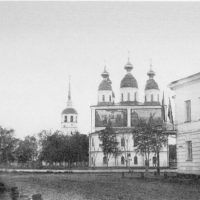
Sobor Mikhaila Arkhangela - (Archangel)
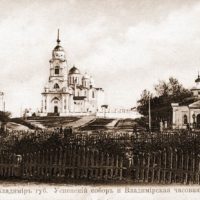
Vladimir, the Assumption Cathedral and Vladimir Chapel

Собор Рождества Богородицы в Устюжне

Sv-Troickaya Cerkov, Russian Empire

Село Богородское. Церковь Богородско-Уфимской иконы Божией Матери

Lubča, Rynak, Illinskaja. Любча, Рынак, Ільлінская (1915-18) (3)
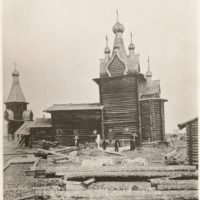
Wooden Church of St. Nicholas, 17th century. The village of Sura on the Sura River. Archangel region, 1891
Related
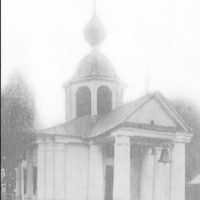
Ivanovo - Chapel of the Kazan Icon of the Mother of God
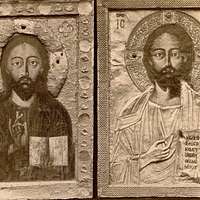
Icons of the Savior from the Gelati Monastery in the Caucasus, Georgia, Caucasus mountains

Murom, Church of the Presentation of the Blessed Virgin in the Resurrection Monastery

Cathedral of the Nativity of Our Lady. Murom
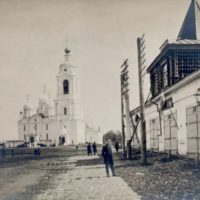
Murom, Nativity of the Mother of God Cathedral

The miraculous icon of Theodore Mother of God in the Assumption Cathedral in Kostroma. 1910
Murom, The chapel of the murdered Prince Constantine
Ivanovo - Chapel of the Kazan Icon of the Mother of God
Church of the Kazan Icon of the Virgin (1694), south facade, Ustiuzhna, Russia
Murom, Church of the Kazan Icon of the Mother of God
Summary
Church of the Kazan Icon of the Mother of God.
Murom is one of the oldest cities in Russia. In the 9th century CE, Murom was the easternmost settlement of the East Slavs in the land of the Finno-Ugric people called Muromians and mentioned as early as 862. A trading post from Volga Bulgaria to the Baltic Sea, it was the capital of an independent principality, whose rulers included Saint Gleb, assassinated in 1015 and canonized in 1071, Saint Prince Konstantin the Blessed, and Saints Peter and Fevronia, subjects of an opera by Rimsky-Korsakov. It was believed to be the hometown of the most celebrated East Slavic epic hero, Ilya Muromets. The Murom-Ryazan was separated from the Chernigov princedom in 1127. Burned to the ground by the Mongols, in 1293 it disappeared from the records until 1351. In 1392, the Grand Duke of Moscow Vasily I Dmitrievich annexed the Murom Principality. Since the XVII century, Murom has become an important handicraft center.
Церковь Казанской иконы Божией Матери.
Муром, один из самых древних городов России, упомянут в «Повести временных лет» в 862 году среди городов, подвластных князю Рюрику. Считается, что это родной город самого знаменитого эпического героя Ильи Муромца. Находившийся на торговом пути от Волжской Болгарии до Балтийского моря, город был столицей независимого княжества, чьи правители включали святого Глеба, убитого в 1015 году и канонизированного в 1071 году, святого князя Константина Блаженного и святых Петра и Февронии, героев оперы Римского-Корсакова. В 1096 году Муром стал объектом междоусобной Муромской войны. Сожжённый дотла монголами, Муром в 1293 году исчез со страниц летописей до 1351 года. В 1392 году великий князь московский Василий I Дмитриевич присоединил Муромское княжество к Москве. С XVII века Муром становится важным ремесленным центром.
Murom is one of the oldest cities in Russia. In the 9th century CE, Murom was the easternmost settlement of the East Slavs in the land of the Finno-Ugric people called Muromians and mentioned as early as 862. A trading post from Volga Bulgaria to the Baltic Sea, it was the capital of an independent principality, whose rulers included Saint Gleb, assassinated in 1015 and canonized in 1071, Saint Prince Konstantin the Blessed, and Saints Peter and Fevronia, subjects of an opera by Rimsky-Korsakov. It was believed to be the hometown of the most celebrated East Slavic epic hero, Ilya Muromets. The Murom-Ryazan was separated from the Chernigov princedom in 1127. Burned to the ground by the Mongols, in 1293 it disappeared from the records until 1351. In 1392, the Grand Duke of Moscow Vasily I Dmitrievich annexed the Murom Principality. Since the XVII century, Murom has become an important handicraft center. Муром, один из самых древних городов России, упомянут в «Повести временных лет» в 862 году среди городов, подвластных князю Рюрику. Считается, что это родной город самого знаменитого эпического героя Ильи Муромца. Находившийся на торговом пути от Волжской Болгарии до Балтийского моря, город был столицей независимого княжества, чьи правители включали святого Глеба, убитого в 1015 году и канонизированного в 1071 году, святого князя Константина Блаженного и святых Петра и Февронии, героев оперы Римского-Корсакова. В 1096 году Муром стал объектом междоусобной Муромской войны. Сожжённый дотла монголами, Муром в 1293 году исчез со страниц летописей до 1351 года. В 1392 году великий князь московский Василий I Дмитриевич присоединил Муромское княжество к Москве. С XVII века Муром становится важным ремесленным центром.
